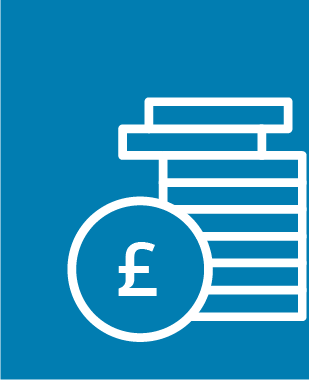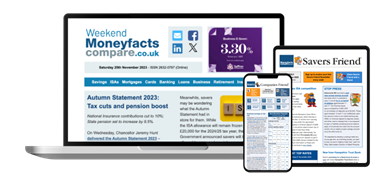Who needs a personal budget?
Everyone! Budgeting has always been a key part of money management, but the cost of living crisis means it’s become even more important as many people struggle to stay afloat. It can be ideal for those who want to look for ways to boost their savings or pay down debt, yet even those who are more financially comfortable could benefit from having a solid understanding of where their money is going, and crucially, how they can make the most of it.
This means creating an effective and realistic personal budget can benefit just about everyone, and this guide will take you through the process.
How to prepare a money budget
Preparing a budget can take a bit of time initially, but once everything’s set up, it can be far easier to keep track of things. Here are five steps to get started.
1. Take stock of your finances
The first thing you need to do is thoroughly review your finances so you know exactly where you stand. Start by going through your bank statements and listing your income, expenditure, savings and any debts you have, making sure to be as accurate as possible. Remember to list any one-off or emergency expenses too, such as dental treatment or boiler repairs, and factor in costs for holidays, birthdays and Christmas as well.
Once you know exactly how much you’ve got coming in and going out, you can more easily see if any changes need to be made, particularly if you’re spending more than you’re earning and using credit to make up the shortfall.
2. Identify your priorities
Your financial priorities will help you determine the areas you need to focus on, as well as the budgeting method that would be right for you. For example, do you want to pay off credit card debt, boost your savings, or simply have more money left over at the end of the month? Do you have several short-term goals (such as a new car or holiday) or are you more focused on the long-term (perhaps a house deposit or retirement saving)? Once you’ve nailed those down, you can…
3. Choose a budgeting method
There are several budgeting methods to choose from that could help you reach your financial goals, and the one that’s right for you will depend on your priorities. For example, if you’ve got a lot of savings goals you might want to choose piggybanking, while those focused on debt repayment could opt for the pay-yourself-first budget. We’ll discuss these in more detail below.
4. Find ways to streamline the process
It can be much easier to stay on track if you’ve got a bit of help, so don’t overlook ways whereby you can streamline things. This could include setting up automated payments into a savings account, arranging direct debits for bills and debt repayments, or using a dedicated budgeting app to stay organised.
5. Review regularly
Budgeting isn’t a one-time thing. While most of the legwork will be involved when you’re setting it up, you should still review your progress regularly to check you’re on track to meet your goals. You may have to adjust things from time to time as well, such as in response to a pay rise, house move or new expenses, so while it’s important to stick to the budget as much as you can, you’ll likely need to be flexible as well.
What is the best way to budget monthly?
There are several budgeting methods that you could try, with the best one for you depending on your financial priorities and how in-depth you want to go. Here are a few to consider:
The 50/30/20 technique
In this method, you dedicate a percentage of your income to wants, needs and goals. This is typically 50% towards needs (such as mortgage payments, food shopping and utility bills), 30% towards wants (for example new clothes or the weekly takeaway) and 20% towards goals (savings or debt repayments).
The beauty of this method is that it can be flexible. While you should keep the three core categories, the amount you dedicate to each can change depending on your priorities. For example, if you want to focus on debt repayments you could swap your goals and wants percentages around, or could cut back even more to put 35% towards paying off your debt and keep just 15% for wants. Provided you make sure your “needs” are covered, the rest you can divide how you see fit.
The pay-yourself-first method
This method requires you to set aside a portion of your income for yourself to go towards savings, retirement or debt repayments, with the rest spent as you normally would. Typically, this would be an 80/20 split – which is why it’s also known as the 80/20 budget – but again, you can be flexible depending on your goals.
The key is that you make sure the 20% is diverted into a savings account, pension fund or debt repayment before you do anything else, ensuring you don’t get to the end of the month and find there’s nothing left over. This is why it’s called the “pay yourself first” budget, and is where automation can come in really handy.
Piggybanking
If you want more control over where your money is going, you may want to try the piggybanking technique. This method sees you divide your monthly income into different pots for different financial goals, with the number of pots you have and the amount you put into each varying depending on your overall budget. You’ll probably want to start with a pot for your bills and another for weekly spending (such as the food shop), then you could have others for an emergency fund, holiday fund, Christmas or monthly treats, for example.
At one time you’d have needed to open several different bank or savings accounts for this to work effectively, but these days there are plenty of current account providers that allow you to manage different pots in one place. Some, such as Starling and Monzo, can automatically split your salary into each pot, and you can even specify which pot bills should be paid from.
Are budgeting apps and calculators helpful?
Yes. Apps and calculators can help you take the guesswork out of budgeting, and some can even help you reach your financial goals quicker. Some of the most popular budgeting apps include:
- Emma gives a complete overview of your finances by linking your current accounts, savings accounts and any other financial products you have (such as loans or credit cards), and can highlight things like unused subscriptions to boost your savings potential.
- Similar to Emma in that it links your financial accounts, Snoop can track your spending to let you know where cutbacks can be made, and can even suggest cheaper utility and insurance providers.
- Plum can be the perfect budgeting app for those who really want to get into the savings habit. It keeps track of your spending and calculates how much you’d be able to save, and it automatically transfers that amount into a separate savings pot.
- Another one for the serious savers, Chip calculates how much you can save and transfers it for you. It also has a recurring save feature, which essentially means you can set up an automatic transfer at a time that suits you.
Find out more about how to save money using an app.
How much should I be saving a month?
This depends on your income and financial goals, but it’s generally recommended to try to save at least 20% of your salary each month. To begin with you should try to build up an emergency fund that contains between three and six months’ worth of living expenses, and from there you can concentrate on your other goals.
This could be saving for your first home, for example, or even for the future of your children. You may have more short-term savings goals as well, such as Christmas or holidays. These should always be factored into your monthly budget, and you can decide how much you can save accordingly.
If saving 20% of your salary isn’t realistic, don’t be disheartened – anything you can squirrel away will be worth it, and if you use one of the budgeting apps or methods highlighted above, you’ll hopefully find you have a few more pounds you can set aside.
No matter how much you can save, getting the best return from your savings is key. Make sure to check out our savings charts to get started.
Should I clear my debts, or save?
This depends on how much debt you have and how high the interest rates are. If you’ve got a lot of credit card debt, for example, you’ll likely be spending more in interest than you’d be earning from a savings account. In this scenario, you’ll probably want to focus on repaying the debt first.
However, if you’ve got a 0% purchase or balance transfer deal, you’d likely be better off paying into a savings account instead (provided you make at least the minimum payments each month, and save enough to pay off the credit card balance once the 0% period comes to an end).
Should I be paying into a pension?
Yes. If you’re employed on a PAYE system your employer will already be directing a portion of your earnings to your pension pot each month – together with their own contribution – but if you can, it’s often recommended to increase the amount you save. This amount should be factored into your monthly budget and should ideally be automatically transferred each month.
Find out more about pension saving by reading our ultimate guide to pensions.




